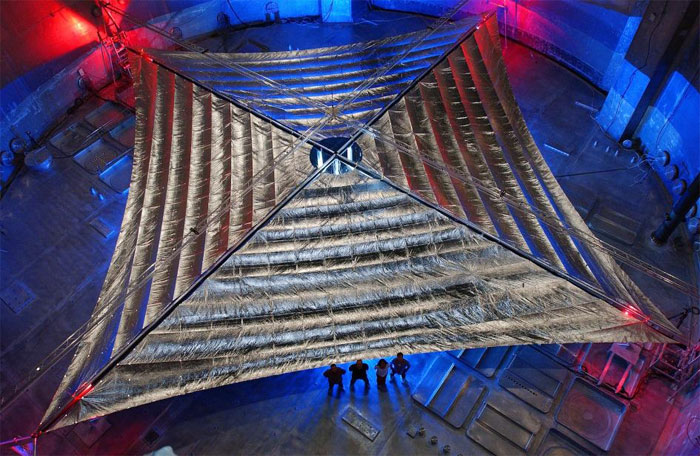NASA's new spacecraft runs on sunlight
In 2018, NASA spacecraft will first out of Earth orbit entirely with sunlight.
This technology makes the solar system and interstellar space exploration much less expensive.
The $ 16 million spacecraft, called the Near-Earth Asteroid Detective (NEA) , is one of 13 payloads announced by NASA on Tuesday (February 2). They will join the first flight of the Space Launch System - super missiles designed to replace the space shuttle and in the future, sending Orion spacecraft to Mars.
The NEA spy ship will take 2 years to reach its destination - 1991 VG asteroid . The energy plate absorbs sunlight and creates continuous thrust, pushing the ship forward at a speed of 28.6 km / s.

The solar "sail"is made of ultra-thin, highly reflective material.
Solar panels are made of ultra-thin, highly reflective materials. When a photon from the sun hits the surface, it is ejected and moves the momentum to the spacecraft.
The concept of the solar "sail" dates back to 1924. Soviet missile pioneers Konstantin Tsiolkovsky and Friedrich Tsander envisioned a spacecraft "using a giant mirror with thin slabs" and declaring cascade "pressure of sunlight to achieve space velocity".
NASA began investing in this technology in the late 1990s. In 2010, NASA successfully launched a small solar satellite into Earth's orbit. The satellite is out of orbit 240 days before re-entering the atmosphere.
Solar panels become possible thanks to the revolution in electronics . "30 years ago, electronics were not too light" - Les Johnson, NASA Technical Advisor, said. "You can't create a spacecraft small enough without a huge energy plate. With the increasingly small component size, we can now create really small, light spacecraft with energy panels have a more reasonable size ".
Despite its modest size, the probe contained sufficient equipment to conduct a survey covering the 1991 asteroid VG - including photographing and measuring the chemical composition, size and movement of the planet .
- The device absorbs sunlight to generate electricity, and also shoots excess heat directly into space
- NASA spacecraft runs out of fuel after a 7 billion km journey
- Scientists have created artificial sunlight
- Sunlight increases the risk of suicide?
- Scientists have discovered that plastic can biodegrade under sunlight in just a few decades
- Launching solar plane
- What will happen if you no longer see sunlight?
- Sunlight can reduce the amount of bacteria in your home
- Unbelievable use of sunlight
- The new method transforms sunlight into fuel
- Fertilizer produced by sunlight
- The hexagonal cloud on Saturn turns yellow when the season is over
 Van Allen's belt and evidence that the Apollo 11 mission to the Moon was myth
Van Allen's belt and evidence that the Apollo 11 mission to the Moon was myth The levels of civilization in the universe (Kardashev scale)
The levels of civilization in the universe (Kardashev scale) Today Mars, the sun and the Earth are aligned
Today Mars, the sun and the Earth are aligned The Amazon owner announced a secret plan to build a space base for thousands of people
The Amazon owner announced a secret plan to build a space base for thousands of people